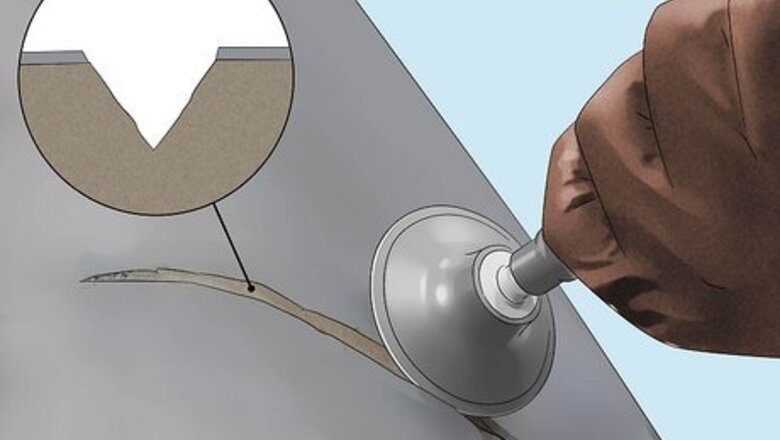
views
- Fix large cracks in any dashboard material permanently by filling it with epoxy. Using epoxy and finishing the dashboard texture takes about 2–3 days total.
- Apply moldable glue to smaller cracks in vinyl or plastic dashboards. Moldable glue takes 1 day to cure.
- Cover damage on any dashboard with a dashboard overlay that matches your vehicle’s make and model. Overlays take minutes to install but a day to fully cure.
Fixing Cracks with Epoxy
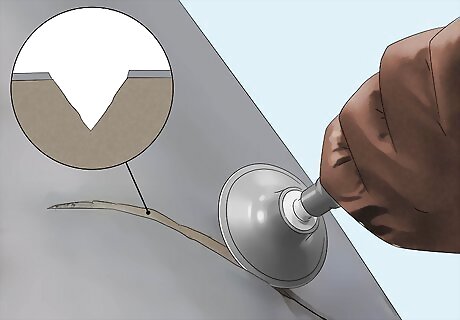
Carve the crack into a V-shape with a rotary tool. Put a cone-shaped sanding bit on the end of your rotary tool. Start at the end of the crack and slowly use the tool by pulling it along the crack’s entire length.Shape the crack so it has a slight V-shape to make the epoxy filler you’ll use later more level. Be sure to wear a dust mask while you work so you don’t breathe in any particles.When you’re finished, wipe the surface down with an ammonia-based cleaner to get rid of the leftover dust. Just keep your doors or windows open to let the fumes air out.This process works best for fixing long or wide cracks in vinyl or plastic dashboards, but can work for any material.
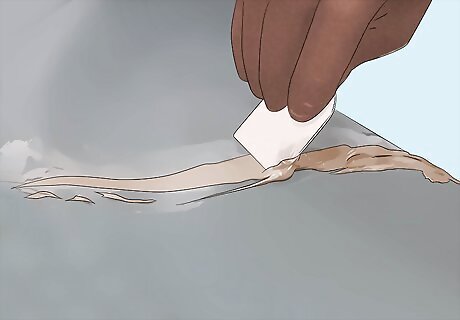
Fill the crack with epoxy and let it dry. Epoxy filler usually comes in 2 parts: the epoxy putty and a hardening agent. Combine the 2 parts of the filler on a scrap piece of cardboard using a putty knife.Scoop and apply the epoxy by pressing it into the crack in your dashboard with the knife. Use the edge of your putty knife to smooth out the epoxy so it’s level with the rest of your dashboard.The epoxy starts hardening within 30–60 minutes, but leave it overnight so it can completely cure before continuing your repair.
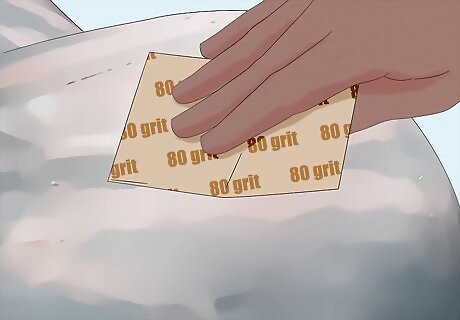
Sand the epoxy level with 80-grit sandpaper. Once the epoxy hardens, go over the surface with your sandpaper to smooth out any imperfections or raised areas.If you have a deep crack in your dashboard, you may need to apply 1–2 additional layers of epoxy after you finish sanding. Just add more epoxy, let it cure, and sand it smooth until it’s level with the surface.
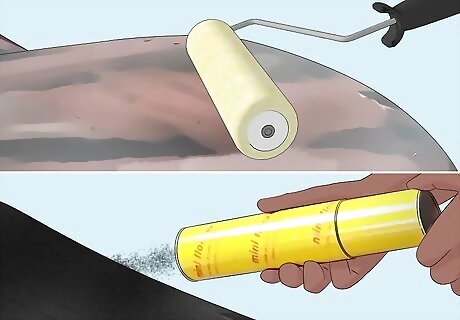
Use a flocking kit to add a suede texture to your dash. Flocking is made from small fabric pieces that you dust onto a surface, so it’s the best choice if your dash has a suede or fabric finish. Flocking kits usually come with an adhesive and applicator.Start by wiping the surface with an ammonia-based cleaner. Keep the windows and doors open to let any cleaner fumes air out.While it’s easier to apply flocking if you remove the dashboard from your vehicle, you can mask off areas to avoid the mess. Tape plastic sheeting over the windshield, floor, vents, and upholstery so you have an easy cleanup.Use the roller provided in the kit to apply a thin layer of the adhesive to your entire dashboard. After you put on the adhesive, apply the flocking within 30 minutes to ensure it sticks.Put on a dust mask, and move the handle of the flocking applicator up and down to apply a thin, even layer of flocking over the entire surface.Leave the flocking to set for about 2 days before getting rid of the excess with a vacuum. Then, remove the plastic sheeting to finish your clean-up.
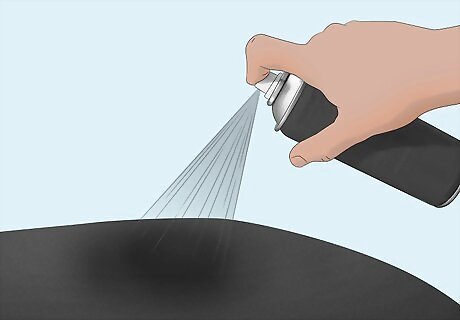
Apply texture spray and spray paint to hide repairs in plastic or vinyl. Texture sprays leave behind small beads that mimic the raised areas on vinyl or plastic dashboards.Wipe your dashboard with an ammonia-based cleaner to get started and ensure you have the best adhesion. Open your vehicle’s windows to let the fumes air out.While you can remove the dashboard from your vehicle, it’s okay to leave it installed. Just cover your windshield, vents, control panel, and upholstery with plastic sheeting and tape the edges down.Put on a dust mask before you start. Hold the texture spray a few inches away from your dashboard and apply it in short bursts. After you apply the texture spray, let it harden overnight.Work in a well-ventilated area. Coat the entire dashboard with primer and let it cure for the time listed on the package. Once it’s cured, apply 1–2 thin layers of spray paint to completely hide your repairs.
Using Moldable Glue
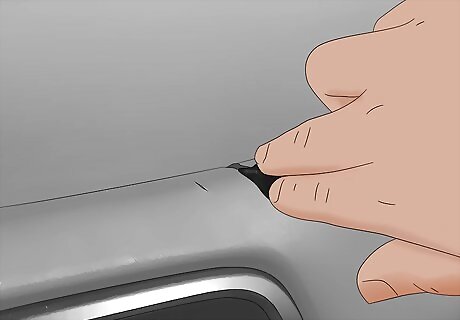
Fill the crack with moldable glue and let it set overnight. Moldable glue has a putty-like consistency that you’re able to work into any shape, and it comes in multiple colors to match your dashboard. Moldable glue is best for small, thin cracks in any type of dashboard material, including vinyl and plastic.Open the package of moldable glue and knead it between your fingers. When it’s soft and pliable, apply the glue into the crack to fill the open space.Wipe any excess glue off with a soft cloth until it’s level with the rest of your dashboard. Leave the moldable glue overnight so it can harden and cure completely.
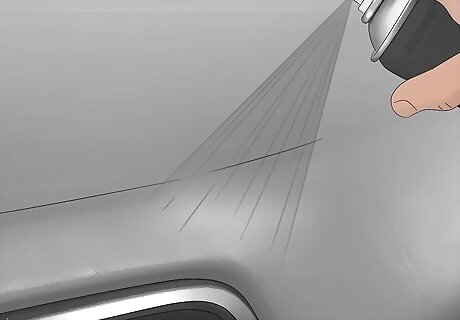
Dab thinned spray paint onto the crack. Start by cleaning the surface with rubbing alcohol to remove any dust and ensure the paint sticks properly to the surface.Work in a well-ventilated area and keep your windows open to let out the fumes. Choose spray paint that matches the color of your dashboard and spray it into a soft cloth.Add a few drops of paint thinner to the cloth so the paint becomes easily spreadable. Paint thinner can cause irritation, so wear a ventilator, safety glasses, and rubber gloves to stay protected.Wipe the spray paint onto the crack and the surrounding areas of your dashboard to help your repair blend in. Leave the paint to dry for the time listed on the package to finish your repair.
Installing an Overlay
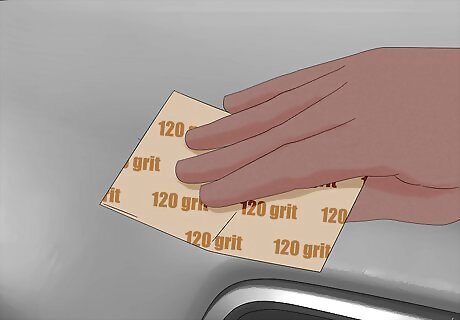
Smooth raised areas of your dashboard with 120-grit sandpaper. Apply gentle pressure with your sandpaper as you work it over the crack and edges of your dashboard. Scuffing up the surface will also help an overlay adhere to the surface better. Wear a dust mask so you don’t breathe in any fine particles.If there are large raised areas, slice off the excess material with a utility knife. When you’re finished, wipe your dashboard with an ammonia-based cleaner to get rid of excess dust. Leave your windows or doors open so the fumes don’t build up.
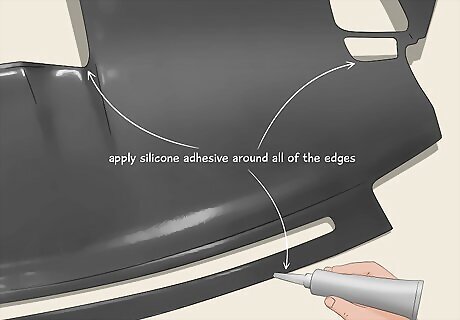
Apply silicone adhesive around the edges of a dashboard overlay. A dashboard overlay sits over the top of your existing dashboard and completely covers the damaged areas.Spread a thin bead of silicone adhesive around all of the edges of the overlay to ensure that it sticks properly to the surface. Once you apply the adhesive, work quickly so it doesn’t dry and lose its stickiness.Overlays are the least time-consuming repairs and work for any type of dashboard, but a match for your vehicle’s make and model may be more difficult. They typically range from $50–$150 USD.
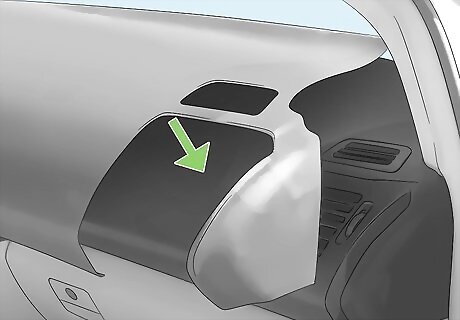
Secure the overlay to your dashboard and let it set overnight. Carefully guide the overlay on top of your dashboard and set it down so the edges are flush. Press the overlay down to ensure the adhesive sticks properly.Apply vertical strips of masking tape to hold the overlay against the dashboard. Then, place scrap pieces of cardboard where the overlay meets your windshield to prevent it from popping up.Leave the pieces in place overnight so the adhesive has time to fully cure. After that, just remove the tape and cardboard, and your overlay will be secure.
How much does it cost to fix a cracked dashboard?
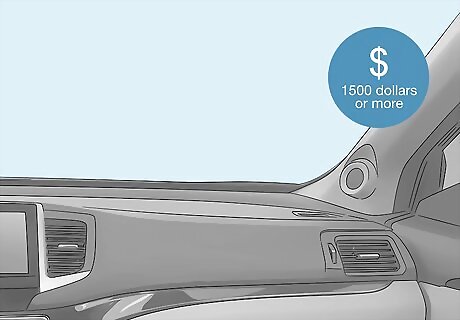
Expect to pay $1,500 USD or more for professional repairs. Rather than filling in the cracks, most professionals replace the entire dashboard so there aren’t any visible repairs. New dashboards tend to cost around $900 USD and installation may add an additional $500 USD to the repair cost.

















Comments
0 comment